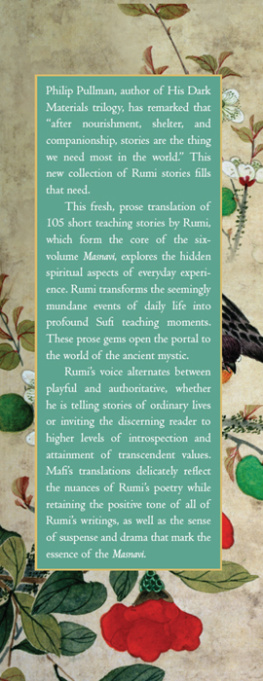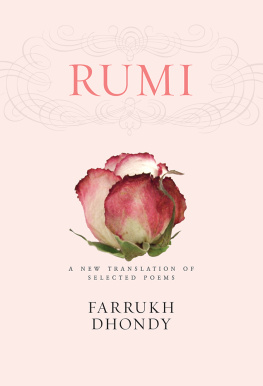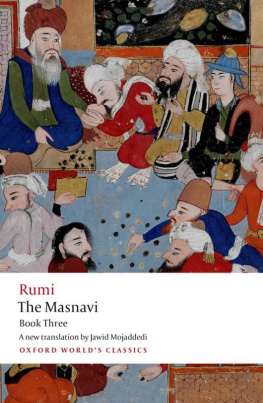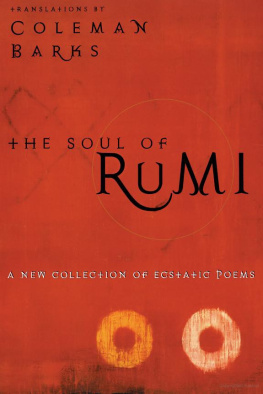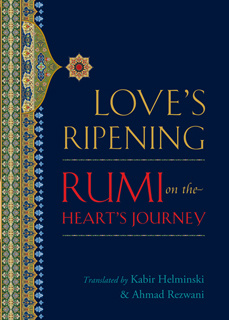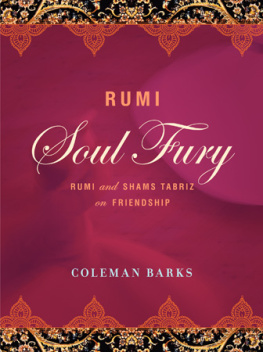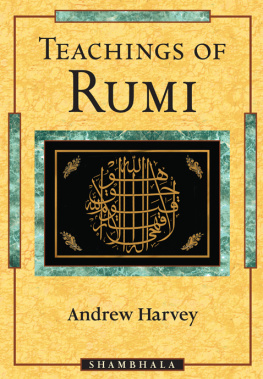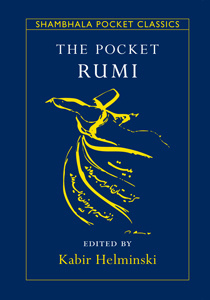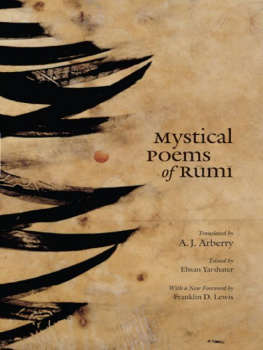


Copyright 2018 by Maryam Mafi
Foreword copyright 2018 by Narguess Farzad
All rights reserved. No part of this publication may be reproduced or transmitted in any form or by any means, electronic or mechanical, including photocopying, recording, or by any information storage and retrieval system, without permission in writing from Red Wheel/Weiser, LLC. Reviewers may quote brief passages.
Cover art: One of a series of paintings of birds and fruit, Wang Guochen (late 19th century) / School of Oriental and African Studies Library, University of London /
Bridgeman Images
Book design by Kathryn Sky-Peck
Typeset in Centaur
Hampton Roads Publishing Company, Inc.
Charlottesville, VA 22906
Distributed by Red Wheel/Weiser, LLC
www.redwheelweiser.com
Sign up for our newsletter and special offers by going to
www.redwheelweiser.com/newsletter.
ISBN: 978-1-57174-746-4
Library of Congress Cataloging-in-Publication Data available on request
Printed in Canada
MAR
10 9 8 7 6 5 4 3 2 1

For Mahsima and Alexandre,
the light of my eyes and much more...
CONTENTS






FOREWORD
P hilip Pullman, the Carnegie Medal winner and internationally celebrated author of novels including the trilogy His Dark Materials, has remarked that after nourishment, shelter and companionship, stories are the thing we need most in the world.
Whatever our cultural or linguistic background, we can all claim some knowledge of the lives of others, and this knowledge has reached us through stories. These stories may have been told by an animated grandparent; maybe we heard them on the radio or encountered them during a religious-studies lesson at school, where we learned about the lives and times of saints, gods, and goddesses.
The literature and history classes that have made the longest-lasting impressions on me are those in which I was allowed a glimpse of the life story of a writer or when my teacher focused on the human stories of the period being taught, peeling away the layers to reveal something of the ordinary life or emotional experiences of the towering figures whose conquests or defeats we were studying or, more poignantly, about the ordinary lives and emotional experiences of the common people of the time. It really did not matter whether these peripheral accounts were tenuous or apocryphal, since their inclusion in the lesson made the whole episode under scrutiny more gripping and memorable.
Stories need not always refer to the great or the good or the legendary. In our own daily lives, we continually share snapshots of our social experiences with ever-expanding and overlapping circles of acquaintances. We ritualistically mark an occasion, such as a significant birthday, an anniversary, or a remembrance, by concentrating on stories that subtly and carefully bring to the fore an individual's vulnerabilities, passions, and idiosyncrasies. Like master storytellers of the past, we edit out the unnecessary infelicities and shine our light on the unforgettable characteristics and achievements we are witness to and, in the process, create yet another indelible substory, some of which may be told in years and even generations to come.
Prophets and preachers of all religions and creeds, too, have been masters of the practice and have relied on parables and maxims to communicate complex theologies to their followers. Parables of the tragedies of martyrs have drawn, and continue to draw, men and women to places of worship around the world, to shrines and town squares; such parables often comprise bits of truth side by side with bits of myth, using literary finesse to stir passions and breathe new life into common themes.
Those who hear or read these stories never seem to find the new variants of old themes tedious. Perhaps there is some reassurance in the predictability of how these tales of morality inevitably conclude. Modern-day films depicting the lives of greed merchants on Wall Street, spiced up with titillating subplots, are, in essence, adaptations of ancient lessons that one cannot serve both God and money. Furthermore, almost all morality tales ascertain that lust for the flesh and the lust of the eye invariably lead to trouble.
Hungry for stories that give us respite from the drudgery of our lives, we now gather before the pulpit of Instagram and Facebook and YouTube to get our daily if ll of the antics of the modern deities, the 21st-century gods and goddesses and gurus who inhabit the heights of Hollywood and its tinseled replicas throughout the world.
For many communities and in many cultures, the most trustworthy narrators of irresistible tales are the poets. Poets, in their own inimitable ways, tell us about the challenges and failures of finding love and the joys of forming friendship. They warn us of the pitfalls, of the betrayals and injustices, that we always encounter along the way, yet encourage us to banish envy and the desire for revenge from our hearts. It is almost always the poets who teach us how to gauge the enormity of a loss, to grieve with dignity, and ultimately to accept mortality.
For more than eight hundred years, countless numbers of people in the Persian-speaking lands, and in recent decades many more around the world who have access to a growing number of excellent translations, have chosen Mowlana Jalal od-Din Balkhi, Rumi, as the spiritual teacher whose coruscating turn of phrase, coupled with the poignancy of candidly expressed emotion, has been a source of comfort as well as instruction.
Although the extent of academic scholarship on the philosophical and theological foundations of Rumi's order of mysticism now outweigh the poet's own writings, it is more rewarding to read Rumi's actual stories, which open the mystical portal to his world.
The stories that Rumi invents or reuses to aid in understanding the principles of Sufism are intricately woven into the warp and weft of the fabric of his teachings, yet to see them in isolation as the parables that they are, we need to painstakingly work our way through twenty-six thousand double lines of metrical verse, compiled in the six books of the
Next page
